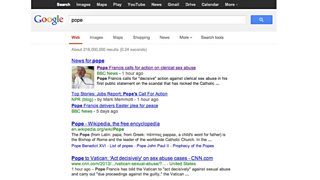ΒιΆΉΤΌΕΔ News linked data ontology
Jeremy Tarling
Senior Data Architect
Hi I work with ΒιΆΉΤΌΕΔ News FM as a data architect, looking at ways that we can use linked data to help users discover relevant News stories quickly and easily on the ΒιΆΉΤΌΕΔ website.
My colleague has about some of the prototyping that we have been doing and has explained the that we will be using in the production environment.
In this post I want to talk about how we are starting to embed machine-readable metadata (called ) in the HTML source code of pages on the .

Core News Ontology v1
Please follow for a more detailed view of the above image.
This will help users to find news content about the stories they want to know about and ultimately help to open up references to the data contained in those stories.
The metadata is derived from information added by journalists at content creation time. Although this additional code does not directly impact the user's experience of the page, it makes a big difference to machines, helping them to ‘understand’ that (for example)
- Is a news article
- Has the headline Results for Anglesey
- Was published at 10:30 on April 29 2013
- Was published by the ΒιΆΉΤΌΕΔ
This set of statements can be derived automatically from the content management system that journalists use to create articles, but we can go further.
By journalists annotating articles with statements about the real-world entities that the article mentions or is about and using (URIs) to refer to those entities in additional RDFa statements, we can publish Linked Open Data with every page of the ΒιΆΉΤΌΕΔ News website.
Using the above example again we state:
- The article is about <a ΒιΆΉΤΌΕΔ unique identifier for Anglesey County Council>
- <this ΒιΆΉΤΌΕΔ unique identifier for Anglesey County Council> is the same as <dbpedia.org/resource/Isle_of_Anglesey_County_Council>
To make this metadata available we have used a vocabulary published by the (IPTC), a news industry body that works on standards for improved news exchange.
The model is called rNews and provides a simple way of expressing these and other facts about news content in RDFa.
Additionally the rNews vocabulary has been mapped against the widely-used metadata vocabulary proposed by , and others.

Initially we have added the automatically generated RDFa statements to all ΒιΆΉΤΌΕΔ News pages with the intention of assisting search engines and social media sites in their display of ΒιΆΉΤΌΕΔ News content.
An immediate benefit of this work will be that search engines will be better able to display links to ΒιΆΉΤΌΕΔ News stories, helping our users to find relevant stories and to determine from a search engine's listings the relevance of the article to the story that they are searching for.
The types of things that an article can be annotated with are defined in the , a model that allows us to make simple annotations (content that mention a person) or more complex ones (content about events that took place at a particular location and time).
The additional annotations that describe the real-world entities that the content mentions or is about will be rolled out over the coming months. Currently you can see examples of these βaboutβ annotations on the results pages for each local council in the .
is senior data architect for ΒιΆΉΤΌΕΔ News Future Media.
